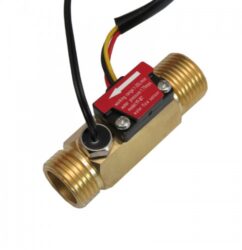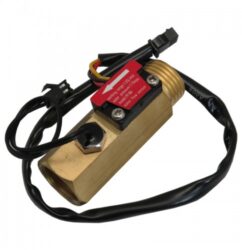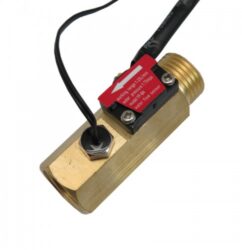- 3D Printer
UPS SERVICE
Shipping & ReturnsSTORES
Find retail locationsFREE SHIPPING
For orders above €100
CUSTOMER CARE
For All Your Questions
- Wireless & IOT
UPS SERVICE
Shipping & ReturnsSTORES
Find retail locationsFREE SHIPPING
For orders above €100
CUSTOMER CARE
For All Your Questions
- Sensors
UPS SERVICE
Shipping & ReturnsSTORES
Find retail locationsFREE SHIPPING
For orders above €100
CUSTOMER CARE
For All Your Questions
- Modules
UPS SERVICE
Shipping & ReturnsSTORES
Find retail locationsFREE SHIPPING
For orders above €100
CUSTOMER CARE
For All Your Questions
- Microcontroller Unit (MCU)
UPS SERVICE
Shipping & ReturnsSTORES
Find retail locationsFREE SHIPPING
For orders above €100
CUSTOMER CARE
For All Your Questions
- Development Boards
UPS SERVICE
Shipping & ReturnsSTORES
Find retail locationsFREE SHIPPING
For orders above €100
CUSTOMER CARE
For All Your Questions
Guide: Using a Brushless Motor as a Stepper Motor
Introduction
Brushless DC motors (BLDC) are widely used in applications requiring high efficiency and smooth motion, but they typically operate in continuous rotation mode. However, with proper control techniques, a BLDC motor can be made to behave like a stepper motor, offering precise position control. This guide outlines the step-by-step process to achieve this, from basic setup to closed-loop control and stepper motor simulation.
Why Use a BLDC Motor Instead of a Stepper?
✅ Higher efficiency with lower power consumption.
✅ Smoother motion with less noise.
✅ More torque at high speeds compared to steppers.
✅ Suitable for applications like gimbals, CNC machines, robotics, and camera sliders.
Overview of Steps
Step 1: Understanding BLDC Control Basics
- Learn how BLDC motors differ from stepper motors.
- Explore different control methods: open-loop vs. closed-loop.
- Understand why position feedback is required for stepper-like behavior.
Step 2: Setting Up the BLDC Motor and Driver
- Connect the BLDC motor to an ESC (Electronic Speed Controller).
- Use an Arduino or ESP32 to send control signals using PWM.
- Test basic motor rotation before implementing feedback control.
Step 3: Adding an Encoder for Position Feedback
- Attach an encoder to the motor shaft to measure position.
- Read encoder data and display it using Serial Monitor.
- Understand key motor specifications like KV rating, torque, and resolution.
Step 4: Implementing Closed-Loop Position Control
- Learn about PID controllers and how they adjust motor position.
- Write code to compare the target position (setpoint) with the actual position (feedback).
- Tune PID parameters (Kp, Ki, Kd) for smooth, precise movement.
Step 5: Simulating Stepper Motor Behavior
- Modify code to accept step and direction signals, like a stepper motor driver.
- Ensure precise control of movement based on external pulses.
- Test with G-code senders or stepper motor controllers.
Step 6: Testing and Optimizing
- Command the motor to move to fixed angles (e.g., 90° or 180°).
- Adjust PID values to improve accuracy and stability.
- Optimize motion for applications like gimbal stabilization, CNC, or robotic arms.
Required Components
Electronics:
- BLDC Motor + ESC (e.g., drone motors with an electronic speed controller)
- Microcontroller (Arduino, ESP32, or STM32)
- Incremental Encoder (e.g., AS5048A, AMT102-V)
- Power Supply (12V–24V, depending on motor)
Software & Tools:
- Arduino IDE (for writing and uploading code)
- PID tuning tools (manual or auto-tune libraries)
- Oscilloscope/multimeter (for debugging signals)
Common Challenges & Solutions
| Issue | Solution |
|---|---|
| Motor not moving | Check wiring, ESC connection, and PWM signal. |
| Position overshoot | Adjust Kp, Ki, Kd values to refine PID control. |
| Unstable motion | Verify encoder readings and filter noisy signals. |
| Incorrect step response | Ensure step pulse timing matches expected resolution. |
Keywords for Search Optimization
BLDC motor stepper control, brushless motor PID control, stepper motor simulation, Arduino BLDC position control, closed-loop BLDC tuning, ESC position control, CNC brushless motor, encoder-based motor control.
Next Steps
Once you’ve completed these steps, consider applying this technique to advanced projects like:
✅ Camera gimbals for ultra-smooth stabilization.
✅ Robotic arms with precise angle control.
✅ CNC machines for high-speed, accurate positioning.
If you’re ready to start, check out the detailed posts for each step! 🚀




